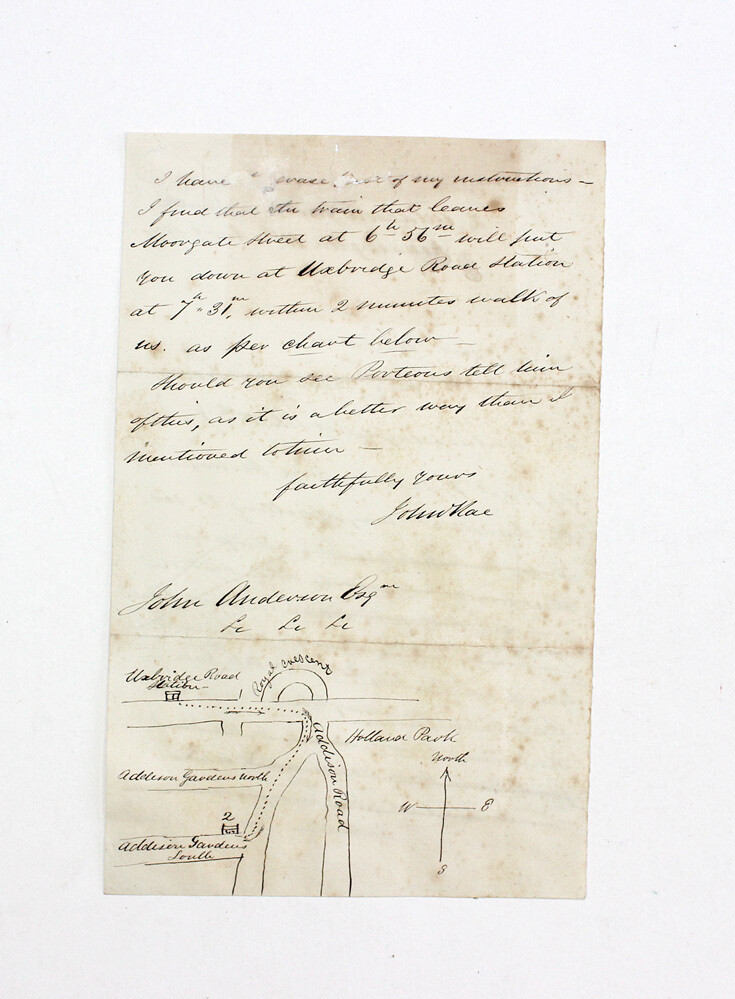
A Rare Original Letter Handwritten, Signed and With a Hand Drawn Map by Scottish Arctic Explorer and Surgeon John Rae. Also includes a Newspaper cutting of his Obituary
A Rare Original Letter Handwritten, Signed and With a Hand Drawn Map by Scottish Arctic Explorer and Surgeon John Rae. Also includes a Newspaper cutting of his Obituary. Dated 1870 and Addressed from His House in London 2 Addison Garden, Kensington. A wonderful letter to a Mr Anderson with directions and a map to his house from the railway station. Part of the letter has been inked out by Rae as he decided to draw a map instead. John Rae 1813-1893 was a Scottish surgeon who explored parts of northern Canada. He was a pioneer explorer of the Northwest Passage. Rae explored the Gulf of Boothia, northwest of the Hudson Bay, from 1846 to 1847, and the Arctic coast near Victoria Island from 1848 to 1851. In 1854, back in the Gulf of Boothia, he obtained credible information from local Inuit peoples about the fate of the Franklin Expedition, which had disappeared in the area in 1848. The Rae–Richardson Arctic expedition of 1848 was an early British effort to determine the fate of the lost Franklin Polar Expedition. Led overland by Sir John Richardson and John Rae, the party explored the accessible areas along Franklin's proposed route near the Mackenzie and Coppermine rivers. No contact with Franklin's party was achieved and Rae later interviewed the Inuit of the region, from whom he obtained credible accounts that the desperate remnants of Franklin's party had resorted to cannibalism. This revelation was so unpopular that Rae was shunned by the Admiralty and popular opinion; the search for Franklin continued for several years. Rae was noted for his physical stamina, skill at hunting, boat handling, use of native methods, and ability to travel long distances with little equipment while living off the land. From a autograph book kept by A. P. Watt (1834-1914), founder of A. P. Watt & Son in 1875, the world's first literary agents. Size is 178m x 112mm. Condition is average. Light surface loss to letter top effecting the address and wording tot he rear. Light foxing. good. Light folding creasing.
